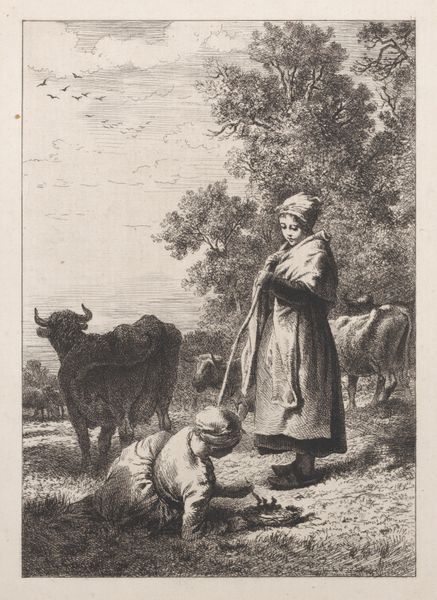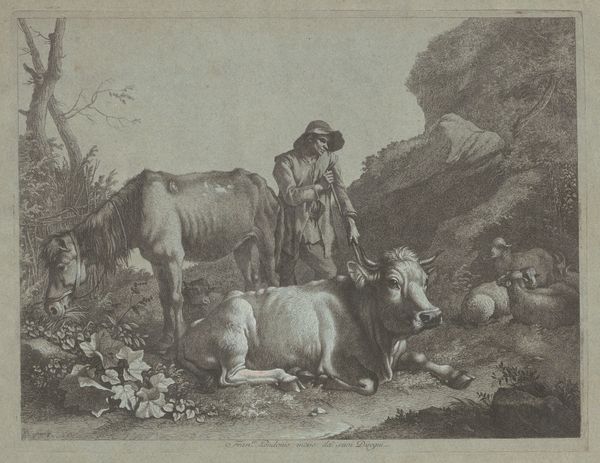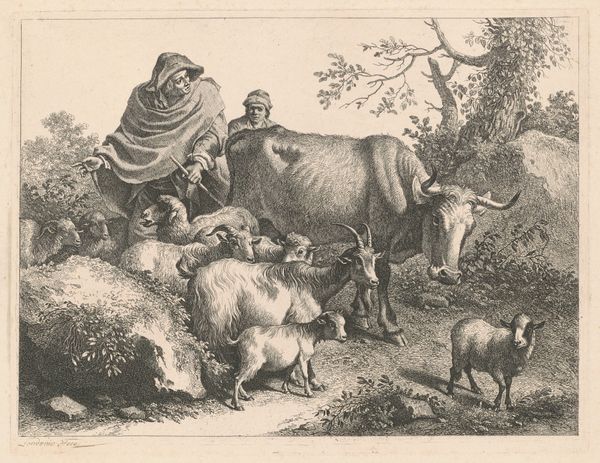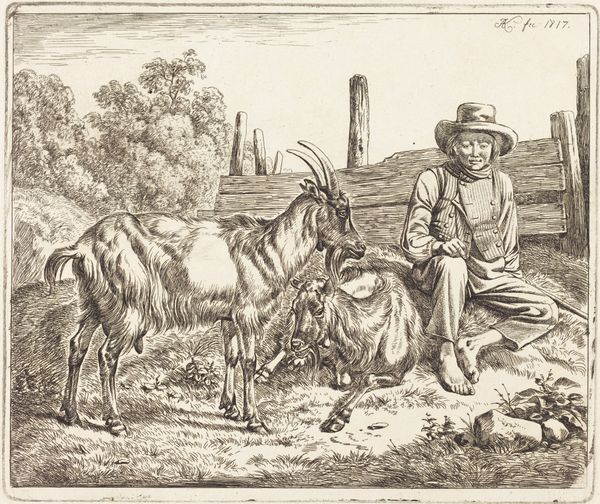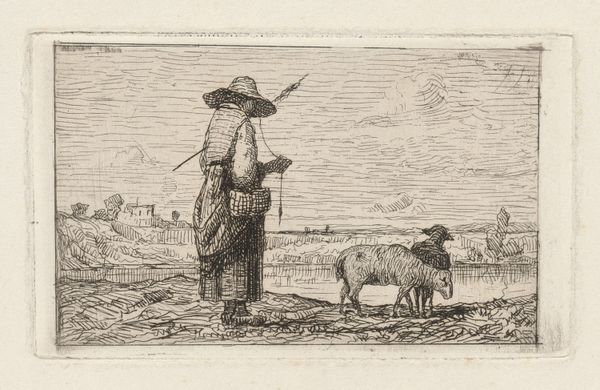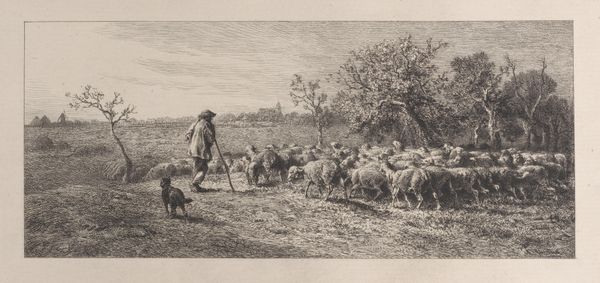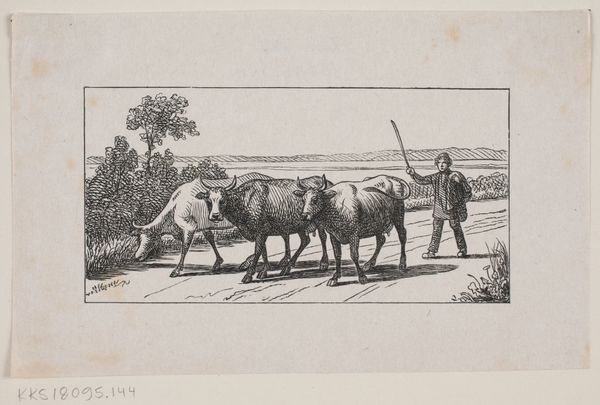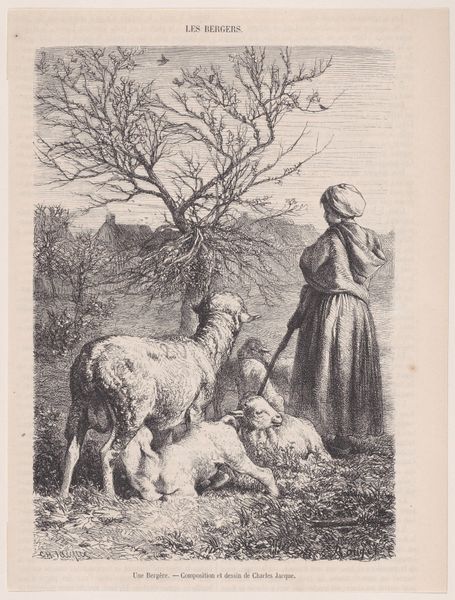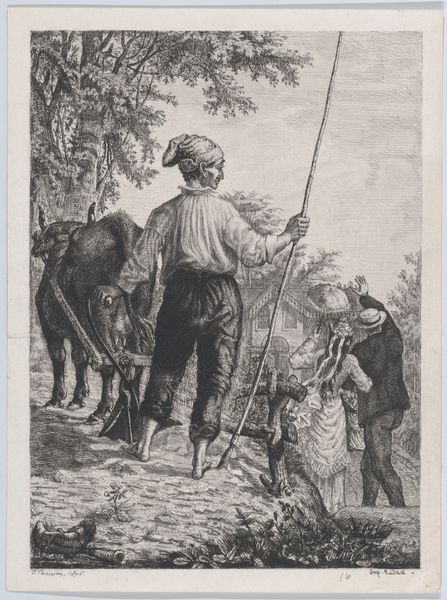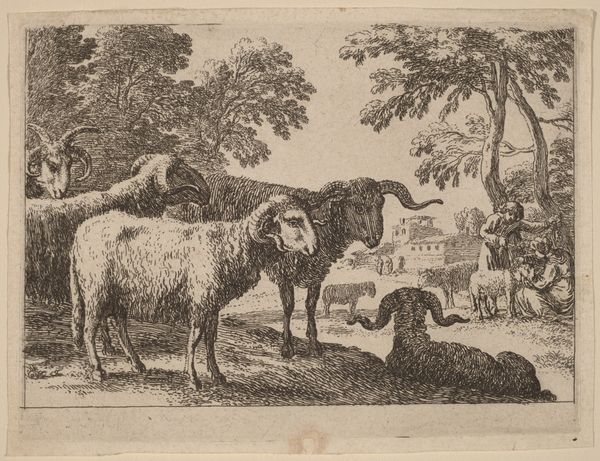
drawing, print, ink
#
drawing
#
narrative-art
# print
#
ink
#
genre-painting
#
realism
Dimensions: 108 mm (height) x 141 mm (width) (bladmaal)
This Illustration til folkeeventyret "Tre små røde Grise" presents a bucolic scene marked by livestock trading. The central motif, the pig, has ancient roots as a symbol of fertility, abundance, and, paradoxically, impurity. Notice how the swine reappear throughout art history; in ancient Egyptian iconography, the pig was associated with Seth, the god of chaos, while in other cultures, it embodied prosperity. This reflects a complex, even contradictory, dialogue in our collective consciousness. These humble animals remind me of other works, such as Pieter Aertsen's paintings of market scenes, where piles of meat evoke the abundance of the natural world while signaling the transience of life. The emotional charge of these porcine figures lies in their ability to evoke feelings of comfort and disgust, wealth and squalor. The pig serves as a looking glass, reflecting our ambivalent relationship with nature and our animal selves. The symbolism of the pig is never static; it evolves, adapts, and resurfaces in art and culture, continually shaped by our hopes, fears, and desires.
Comments
No comments
Be the first to comment and join the conversation on the ultimate creative platform.
